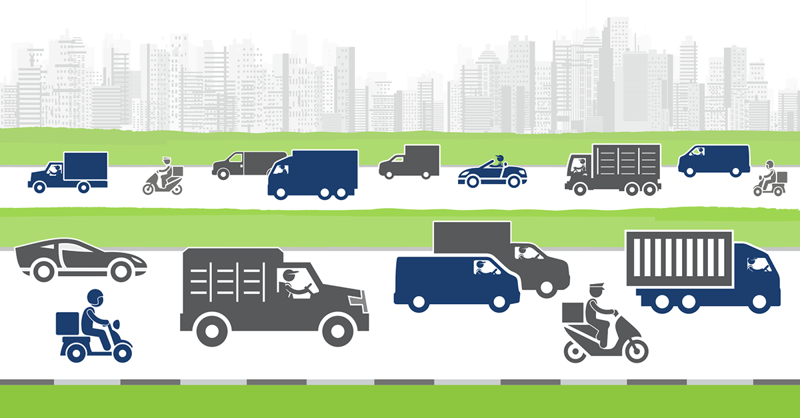The race to meet the expanding expectations of eCommerce customers has led shippers to find ways to deliver parcels faster and cheaper. This focus on the last mile, combined with the growing gig economy, has spawned a new model made up of smaller and more agile carriers.
In fact, a 2021 report from McKinsey & Company showed that 75 percent of apparel, hard goods, and specialty retailers intend to build out network capabilities that offer two-day or faster delivery. It also said that 42 percent are aiming for one-day click-to-customer speed by 2022.
For consumers, speed matters differently for different items.
Same-Day Delivery:
- food and grocery
- beauty
Next-Day Delivery:
- apparel
- home décor
- electronics
Two Days or Less Delivery:
- general merchandise
The Rise of Gig Delivery Economy
For those not familiar with the gig economy, it is an environment in which temporary positions are common and organizations contract with independent workers for short-term engagements.
And there are plenty of people working gigs either as their main or secondary source of income. According to the Bureau of Labor Statistics, in 2018 16.5 million people are working in “contingent” or “alternative work arrangements,” with 2.6 million classified as on-call workers (1.7 percent of total employment). That’s where you will find many of the crowdsourced delivery workers.
While same-day delivery is not a new concept, the demand for same-day, white glove, and other customer-experience-focused and more complex delivery continues to grow, and the need for new and innovative carrier options and delivery tracking software will continue to grow along with it.
Crowdsourced delivery or crowdsourced shipping is an emerging method of fulfillment that leverages networks of local, non-professional couriers to deliver packages to customers' doors. While most common in meal and grocery delivery thus far, that is shifting to other shippers as traditional retailers look for ways to cut costs and maximize supply chain efficiency, especially for same-day deliveries.
“The market for same-day and instant delivery will account for around 20 percent of standard parcel revenue by 2025,” according to an article in Logistics Management. “Management consultants at McKinsey & Company expect average year-on-year growth of around 40 percent until 2025.”
“Crowdsourced delivery was not possible 10 or 15 years ago. Two trends in technology, one that impacts retailers and one that impacts drivers, allow for the rise of crowdsourced delivery. To allow for retailers to leverage their stores as fulfillment centers, they need to be able to have visibility of their products at a SKU level at a store level. Most retailers now have that, whether they’ve previously implemented buy online, pick up in store (BOPIS) or capabilities like buy online, ship from store,” says Ingrid Bekkers, VP Marketing at Deliv, which provides a last-mile delivery solution in 35 markets. “Likewise, there has been a profound technology shift for the drivers. Today, everyone has a GPS computer in their pocket. With that, you can mobilize a disparate workforce of delivery drivers by a whole host of factors, chief among them is – where they are.”
This increased demand for speedy service from retail, e-tail, office, manufacturing, and any other business that ships parcels, packages, or documents will continue to grow the need for quick and on-call carrier service outside of its traditional urban homes. People looking for job flexibility are evident as well.
“The demand and the technology are there to power crowdsourced delivery. And the supply is growing - people want to work in the gig economy for the flexibility that it provides," says Bekkers. "According to Intuit, the gig economy is now estimated to be about 34 percent of the workforce and expected to be 43 percent by the year 2020.”
However, this need to use a disparate multi-carrier option can leave shippers feeling as if they have less control—and reporting—on their shipping operations.
“The biggest question we get is how to get started with same-day delivery. The answer first starts with the commitment,” says Bekkers. “Omnichannel execution is a process, not an event. Any successful omnichannel program needs the support from the top that filters down throughout the organization.”
5 keys to a good crowdsourcing partner
While crowdsourcing parcel delivery may seem as easy as pressing a button on an app, it takes some know-how. According to Bekkers, here are five key things to look for in a crowdsourcing partner:
- Delivery strengths. Consider whether same-day package delivery adds value to your brand. Your delivery partner is an extension of your brand. You want to make sure that delivering value to your customers is a top priority for your partner.
- An understanding of your business. Not all delivery is the same - restaurant delivery requires very different expertise than package delivery. Make sure to research whether the company has experience and has a logistics process that is designed with your industry in mind.
- On your schedule. Depending on what type of company you are, your customers may demand a certain delivery speed. Ask whether the delivery company can offer scheduled deliveries, on-demand deliveries, anytime today deliveries, or all options.
- Regional footprint. If you have more than one store, is the same-day delivery company in all of the markets that you want to service? Working with multiple last-mile delivery companies across markets can become cumbersome quickly.
- The customer experience. Is there a person that you or your customers can call if they have a question about deliveries? Does the company offer real-time GPS tracking, so you know where your items are at all times? Do they offer dashboards, etc.?
Conclusion
The time is now for eCommerce companies to start thinking about how to leverage gig economy delivery services through multi-carrier shipping software with omni-channel delivery capabilities.
